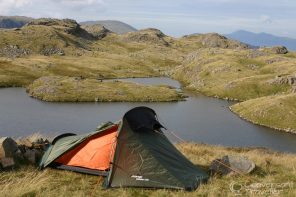The Canary Islands are famed for their beautiful sunshine year-round, but summer is truly the best time to visit. Average temperatures stay comfortably between 25 and 30 degrees Celsius, while the different islands provide ample opportunities for tourists with different tastes, interests and activity levels.
Whether you’re heading there with family, friends, kids, on your own or with that special someone, it’s worth knowing a few of the best bits about the Canary Islands first. We’ve covered everything you should know in this quick guide.
The Canary Islands: An introduction
The Canaries are an archipelago made up of seven different Spanish islands. They’re located more than 1,700 kilometres southwest of Madrid in the Atlantic Ocean, just 67 miles from northwest Africa at their nearest point. Many feature rugged volcanic landscapes, with bustling towns and charming villages aplenty.
The islands and their highlights include:
Tenerife
The largest and most diverse of the Canaries, Tenerife is defined by a dramatic volcanic landscape. At its centre is the Teide National Park, home to Spain’s highest peak. The island boasts dense rainforests and bustling old towns too, so there’s something for everyone.

Lanzarote
This island is famed for its volcanic landscapes, characterised by alluring black sands on vast beaches. With unique architecture shaped by artist César Manrique, Lanzarote is perfect for laid-back holidays.
Fuerteventura
As the second-largest island in the Canaries, Fuerteventura is famed for its beautiful beaches that promise a consistent, strong breeze. With easy direct flights from the UK, it’s a popular choice for those looking to book an active last-minute holiday.
Gran Canaria
Gran Canaria is an island of two halves. You’ll find pristine beaches in the south and verdant mountains in the north, with plenty of vibrant towns and charming villages nestled between. The capital city, Las Palmas de Gran Canaria, is a picturesque and historic destination with an active harbour.

La Gomera
Known as ‘The Garajonay Island’ after its UNESCO World Heritage site, the Garajonay National Park, this island is known for its natural beauty, diverse wildlife, and opportunities for outdoor activities. Tourists flock here for hiking, cycling, and exploring the wild terrain.
La Palma
A paradise for keen walkers and nature enthusiasts, La Palma is known in Spanish as La Isla Bonita. It’s home to impressive landscapes defined by imposing volcanoes, lush forests, unspoilt beaches and dark, starry night skies. Expect panoramic views of deep, blue seas set upon rugged terrains and sharp ridges.
El Hierro
As the least explored and smallest of the Canary Islands, El Hierro offers a taste of a different lifestyle. Home to around 11,000 people, this island is committed to becoming entirely self-sufficient through renewable energies. It welcomes responsible, eco-conscious tourists. With undisturbed natural landscapes, it’s best for those craving the chance to truly disconnect from their daily routine.
Something for everyone
The Canary Islands feature so many similarities, but keen adventurers easily recognise one from its neighbour. They’re fantastic for all types of travellers, promising cultural experiences as unique as the landscapes. Whether you’re headed there on a romantic getaway or an adrenaline-pumping adventure holiday, the Canaries make a dreamy destination.





